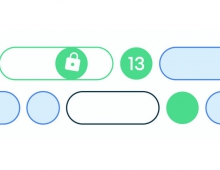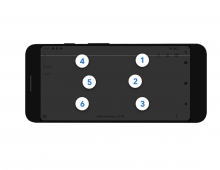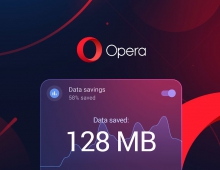
Android, Sprint and Samsung Increased Share In Early 2013
Android continued to increase its share of smartphones sold over the last year for the 3 month period ending February 2013, while Sprint and Samsung also saw increases, according to data released today by Kantar Worldpanel ComTech.
With more than half (51.2%) of smartphone sales, Android realized 5.8% growth compared to the same period last year. iOS remains in second place with 43.5% of smartphone sales, down for a consecutive period, by 3.5% versus last year. Windows continued to make gains, up to 4.1% of smartphone sales.
The top carrier remained Verizon with 35% of smartphones sold in the 3 months ending February 2013. While AT&T remained in second place, Sprint increased, now representing 15% of smartphones sold (up 2.1% pts).
The data is derived from Kantar Worldpanel ComTech USA's consumer panel, which is conducting more than 240,000 interviews per year in the U.S. alone. ComTech tracks mobile phone behavior and the customer journey, including purchasing of phones, mobile phone bills/airtime, and source of purchase and phone usage. This data is exclusively focused on the sales within this 3 month period rather than market share figures.
Kantar Worldpanel ComTech analyst Mary-Ann Parlato states, "Last month we saw that Android's increases were thanks to a large increase in Samsung sales within Sprint. This month, while the increases for Samsung are less pronounced, we're still seeing an increase in uptake of the brand, which is now impacting on Sprint's overall share in smartphone sales."
It was thanks to Samsung?s price drop at the back end of 2012 that led various smartphone and featurephone users to upgrade to a Samsung device.
"Of those who changed their phone over the last year to a Samsung smartphone, 19% had previously owned a Samsung featurephone, 15% owned a HTC smartphone, 14% owned an LG featurephone, 10% owned a Samsung smartphone and 9% owned a BlackBerry. It?s apparent that Samsung is successful at capturing users from across the competitor set and not just gaining from their own loyalists, (albeit loyalty towards Samsung has also grown)." Parlato continues.
And naturally, it was the figurehead Samsung devices doing well during this period. Of those who purchased a Samsung in the last year, 52% purchased a Galaxy S III, 21% a Galaxy S II and 5% a Galaxy Note II. And compared to purchasers of other brands, Samsung purchasers were more likely to cite "handset cost" and "carrier brand" as key drivers.
So while price drops on Sprint have helped the carrier, as well as Samsung and Android gain further success this 3 month ending period, share growth for other brands was also more pronounced this month. Brands Motorola and Nokia in particular saw very slight increases within smartphone sales.
The top carrier remained Verizon with 35% of smartphones sold in the 3 months ending February 2013. While AT&T remained in second place, Sprint increased, now representing 15% of smartphones sold (up 2.1% pts).
The data is derived from Kantar Worldpanel ComTech USA's consumer panel, which is conducting more than 240,000 interviews per year in the U.S. alone. ComTech tracks mobile phone behavior and the customer journey, including purchasing of phones, mobile phone bills/airtime, and source of purchase and phone usage. This data is exclusively focused on the sales within this 3 month period rather than market share figures.
Kantar Worldpanel ComTech analyst Mary-Ann Parlato states, "Last month we saw that Android's increases were thanks to a large increase in Samsung sales within Sprint. This month, while the increases for Samsung are less pronounced, we're still seeing an increase in uptake of the brand, which is now impacting on Sprint's overall share in smartphone sales."
It was thanks to Samsung?s price drop at the back end of 2012 that led various smartphone and featurephone users to upgrade to a Samsung device.
"Of those who changed their phone over the last year to a Samsung smartphone, 19% had previously owned a Samsung featurephone, 15% owned a HTC smartphone, 14% owned an LG featurephone, 10% owned a Samsung smartphone and 9% owned a BlackBerry. It?s apparent that Samsung is successful at capturing users from across the competitor set and not just gaining from their own loyalists, (albeit loyalty towards Samsung has also grown)." Parlato continues.
And naturally, it was the figurehead Samsung devices doing well during this period. Of those who purchased a Samsung in the last year, 52% purchased a Galaxy S III, 21% a Galaxy S II and 5% a Galaxy Note II. And compared to purchasers of other brands, Samsung purchasers were more likely to cite "handset cost" and "carrier brand" as key drivers.
So while price drops on Sprint have helped the carrier, as well as Samsung and Android gain further success this 3 month ending period, share growth for other brands was also more pronounced this month. Brands Motorola and Nokia in particular saw very slight increases within smartphone sales.





















